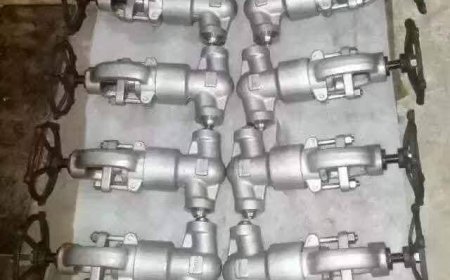What Is Mobile Home Roofing and How Does It Differ
Mobile home roofing protects manufactured homes from weather, boosts energy efficiency, and extends roof life with durable, weather-resistant materials.

If youve ever driven past a mobile home park, you may have noticed that the rooftops dont look quite like the ones on regular houses. Thats because mobile home roofing is its own kind of thingunique in the way its built, maintained, and even repaired. While it might sound pretty straightforward, theres a lot more going on up there than meets the eye. Whether youre a new mobile homeowner or just curious, lets take a friendly stroll through what makes these roofs special, what you should know about their features, costs, safety, and how emergencies are handled.What Is Mobile Home Roofing and How Does It Differ
Key Features: More Than Just a Lid Over Your Head
Unlike the steep, overlapping shingles you see on a traditional house, mobile home roofs are designed with the homes portability and structure in mind. Most mobile homes are built with flat or gently sloping roofs, which means the water doesnt run off quite as quickly. Thats why materials like metal panels, rubber membranes, or special coatings are often the go-to choicesthey create a watertight seal to keep leaks at bay.
Another thing that stands out is the weight. Mobile homes cant handle super heavy roofing material; they need something lighter so the house can be transported without damage. This is why you wont see thick clay tiles or heavy concrete up there. Instead, manufacturers choose options that combine weather resistance with minimal weight, making the whole home easier to move if needed.
| Type of Roof | Common Material | Main Purpose |
|---|---|---|
| Flat / Low-Slope | Rubber, Metal, Coated Asphalt | Lightweight, Waterproof |
| Pitched (Peaked) | Metal, Shingles (lighter type) | Better drainage, Improved insulation |
| Retrofit Roof | Aluminum, Insulated Panels | Energy efficiency, Leak prevention |
Whats really cool is that many mobile home roofs can be upgraded or retrofit with extra insulation, making them more comfortable in both summer and winter. So, if youre worried about extreme temperatures, there are ways to make that thin roof work harder for you.
Safety: Why Mobile Home Roofs Need Extra Attention
Safety isnt just about keeping the rain out. Because mobile homes are lighter and sometimes more vulnerable to strong winds or storms, their roofs have to work double duty. For instance, the roof must stay firmly attached even if the home shakes or shifts during a move or a rough weather spell.
Its also important to keep an eye out for weak spots. With a thinner structure, leaks and water buildup can lead to bigger issues like mold, warped walls, or even roof collapse if ignored too long. Thats why regular checksespecially after heavy rain or snoware a must for mobile homeowners.
A roof isnt just shelter; its your first line of defense against whatever the sky throws at you.
If you ever plan to get up there for maintenance, remember: mobile home roofs arent built to hold a lot of weight. Stepping in the wrong spot could mean trouble, so most repairs are best left to the pros with the right ladders and safety gear.
Cost: Budget-Friendly, But With Some Surprises
One of the perks of mobile home roofing is that, in general, it costs less than roofing for standard houses. The materials are often more affordable, and the installation process is less complicated because of the smaller size and lighter structure.
However, dont let the lower price tags fool you. If you need a special kind of coating or want to add extra insulation, those upgrades can add up. And if your roof has suffered from years of leaks or neglect, the repair bill might look more like a regular homes after all.
Heres a quick breakdown of what you might expect:
| Roof Type | Average Cost Range | Maintenance Frequency |
|---|---|---|
| Metal Overlays | $1,000 - $3,000 | Low (check yearly) |
| Rubber Membrane | $1,500 - $4,000 | Medium (inspect semi-annually) |
| Sealed Coating | $700 - $2,500 | High (reapply every 2-3 years) |
While you might save money up front, remember to budget for regular touch-ups to keep that roof in good shape.
Emergency Service: When the Unexpected Happens
Life likes to surprise us, and sometimes that means waking up to a leaky roof during a storm or discovering a branch has punched a hole through your ceiling. Because of their unique structure, mobile home roofs often need fast, specialized attention when things go wrong.
Emergency roof repairs for mobile homes are usually quicker to handle, but you need someone who really understands these specific rooftops. A general home roofer might not have the right materials or tools, and patching things up the wrong way could make leaks even worse. Thats why its smart to have a go-to contact for mobile home emergencies, just in case.
If youre handy, you might be able to do a temporary fix with a tarp or sealant, but calling in the experts is the safest bet for a long-term solution. And, since water damage can spread quickly in a mobile home, the faster you act, the better.
Conclusion: The Roof Over Your Mobile Home Matters
At the end of the day, mobile home roofing is more than just a coverits a carefully considered part of the home, designed for lightness, weather protection, and easy maintenance. While it isnt the same as what youd find on a brick-and-mortar house, it has its own strengths and quirks. Knowing what makes these roofs different can help you keep your home safe, comfortable, and ready for anythingrain or shine.
Read More: Anaheim Roofing










































